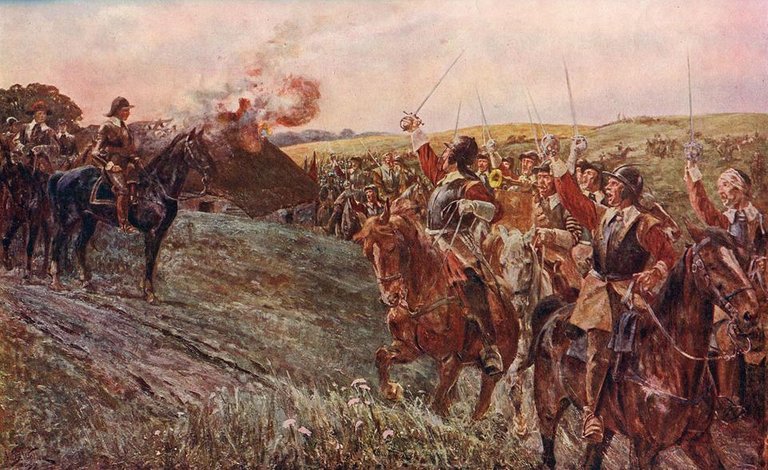The first outing of parliament’s New
Model Army irrevocably neutered the
royalist cause in the first British Civil War
With dense fog hanging over
Naseby in Northamptonshire, the
opposing armies of King Charles I
and his disgruntled parliament struggled to
see each other across the battlefield. It was
14 June 1645, three years into the first of
the British Civil Wars, and so far neither had
managed to inflict a decisive defeat on the other.
Naseby was where that would change: within
three hours, Charles’s chances of reasserting
his authority had all but evaporated.
Relations between monarch and parliament
had broken down in January 1642, when Charles,
maintaining his divine rights as King, stormed
the House of Commons to arrest five MPs for
treason. he men weren’t there, and Charles left
unsatisfied and with parliament set against him.
Within six months, both factions had raised
their standards and were in open warfare.
he prelude to this particular clash came in
May 1645 with the royalist sacking of Leicester,
after which Sir homas Fairfax and Oliver
Cromwell were swiftly ordered to bring the
King to battle. In the fighting that followed, the
royalists suffered devastating losses – nearly
1,000 dead or wounded and 5,000 captured.
Parliamentary losses were around 400.
Blame for the defeat is often laid at the door
of the Earl of Carnwath, who grabbed the
bridle of Charles’s horse to stop the King from
charging into the fray to rally his men. Some of
the royalist troops saw this as a sign to retreat,
and they abandoned their positions.
Charles wasn’t able to muster an army as
strong again and within a year parliament had
snuffed out all organised royalist resistance.
he King went on the run trying to rally
support, until he was finally handed over to
parliamentary forces in January 1647.
